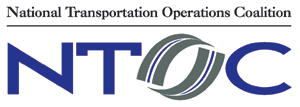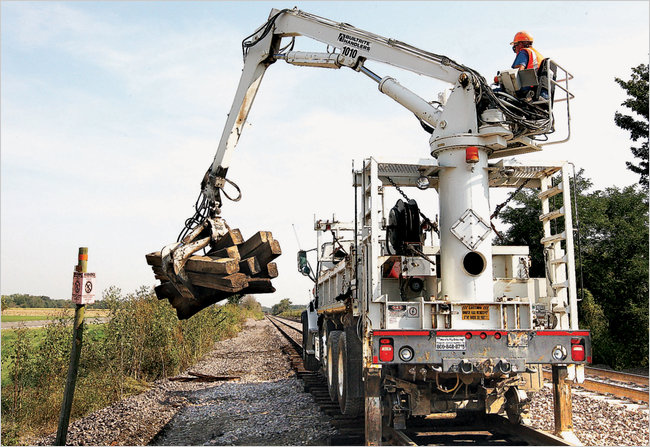NTOC Talks Newsletter: October 6, 2010
National NUG Summit Presentations Now Online
http://www.i95coalition.org/i95/Portals/0/Public_Files/pm/presentations/NUG%20Summit%20All%20PresentationsFINAL.pdf
Category >Now Available: October 6, 2010 (NTIMC)
A national summit on the National Unified Goal (NUG) for Traffic Incident Management took place September 21-22, 2010. The NUG Summit presentations are now available online on the I-95 Corridor Coalition’s Web site through the link above.
FHWA/Volpe will be providing a link to the NUG Summit September 21 Webinar Audio File, which will also be posted in the NTOC newsletter when available.
The NUG is a unified national policy developed by major national organizations representing traffic incident responders, under the leadership of the National Traffic Incident Management Coalition. The summit brought together fire, police, first responders, transportation engineers, and the towing industry to discuss best practices for responding to traffic incidents while keeping in mind the objectives of responder safety; safe, quick clearance; and prompt, reliable, interoperable communications. To learn more about NTIMC and the NUG, visit http://timcoalition.org/?siteid=41&pageid=1973.
Quantifying the Benefits of Coordinated Actuated Traffic Signal Systems: A Case Study
http://www.virginiadot.org/vtrc/main/online_reports/pdf/11-cr2.pdf
Category >Now Available: October 6, 2010 (TRB)
The Virginia Transportation Research Council, a partnership of the Virginia Department of Transportation (VDOT) and the University of Virginia, has released a report that explores ways to quantify the benefits of coordinated actuated traffic signal systems. To read the report, click on the link above.
NCHRP 03-103 Request for Proposal: Update of the Signal Timing Manual
http://apps.trb.org/cmsfeed/TRBNetProjectDisplay.asp?ProjectID=2953
Category >Opportunity: October 6, 2010 (TRB)
The 2008 Signal Timing Manual provides a basic synthesis of signal timing practices in the United States. The manual covers fundamental signal timing related to intersection design, vehicle detection, and coordination of signalized intersections; but there are many concepts that could be addressed in greater detail. The current manual acknowledges some of these in its last chapter, “Advanced Signal Timing Concepts.”
The objective of the NCHRP research is to prepare an updated version of the Signal Timing Manual that expands its scope and depth. The guide should be suitable for adoption by AASHTO and be packaged in a manner appropriate for the various users of the manual. To read the complete request for proposal, click on the link above. The deadline is November 11, 2010.
Researchers Argue for Smarter Traffic Lights
Link to IDG News article:
http://www.pcworld.com/businesscenter/article/206742/researchers_argue_for_smarter_traffic_lights.html
Category >Breaking News: October 6, 2010 (NTOC)
Those routinely stuck in urban traffic jams can take heart in the fact that scientists may have found a way to reduce congestion, by rethinking the way traffic lights should operate. Two European researchers, Dirk Helbing of the Swiss Federal Institute of Technology Zurich, and Stefan Lämmer of Dresden University of Technology in Germany, propose changing the way intersection traffic lights are timed, using a combination of sensing technology, analytics and networking.
Rather than the usual approach of coordinating the timing the lights along the road in a way that anticipates the usual flow of traffic, the researchers suggest letting traffic lights themselves judge when to turn green or red.
“Instead of waiting for a certain point in time before switching to green, we now wait for a critical number of vehicles ready for service at maximum rate which given by the saturation flow,” they argue in a Santa Fe Institute study. Such an approach could reduce congestion by as much as 10 to 30 percent, the researchers claim. Their study can be found at http://www.santafe.edu/media/workingpapers/10-09-019.pdf.
Tools to Evaluate Carbon Emissions from Transportation Agencies/Multipollutant Effects of Emission Control Strategies
https://www1.gotomeeting.com/register/878091352
Category >Opportunity: October 6, 2010 (TRB)
TRB is offering this Webinar on November 10, 2010 from 1:00 p.m. – 3:00 p.m. EST.
A comprehensive set of reports issued by the National Research Council finds compelling evidence that climate change is occurring, and encourages the United States to act now to reduce greenhouse gas emissions. This Webinar will explore two projects administered by TRB that provide tools and information for transportation agencies seeking to reduce greenhouse gas emissions. One project has developed a tool that could assist transportation agencies in evaluating the carbon emissions of day-to-day activities, and may provide agencies with information on relevant carbon mitigation techniques. The second project provides transportation officials with information on the effects of different transportation air quality control strategies on a full range of pollutants, and identifies methods for evaluating tradeoffs among different pollutants when selecting control strategies. Panelists will discuss the assessment of various pollutants, including greenhouse gas emissions, ozone precursors, particulate matter, and air toxics.
Registration: Participants must register 24 hours in advance through the link above. There is no fee for current Chairs of TRB Standing Committees, Sections, or Groups. There is also no fee for employees of TRB Sponsors: http://bit.ly/9tduwj. TRB Sponsors: Please use your work email to register for the session.
Other sites must pay $99 per site. Questions? Contact Reggie Gillum at rgillum@nas.edu.
Synthesis of Active Traffic Management Experiences in Europe and the United States
http://www.ops.fhwa.dot.gov/publications/fhwahop10031/index.htm
Category >New Resource: October 6, 2010 (FHWA)
This synthesis report describes both US and European techniques in Active Traffic Management (ATM). The primary focus of this synthesis is on European experience, which in some cases dates back a number of years. This report provides a compilation of lessons learned, experiences, operational results, and benefits associated with active traffic management applications. To access the report, click on the link above. (Publication Number: FHWA-HOP-10-031)
Motorists on New Jersey Turnpike, Garden State Parkway to Get High-Tech Traffic Forecasts
Link to article in The Star-Ledger:
http://www.nj.com/news/index.ssf/2010/09/motorists_on_nj_turnpike_garde.html
Category >Breaking News: October 6, 2010 (NTOC)
The traffic version of Willard Scott and Al Roker will be coming soon to the New Jersey Turnpike and the Garden State Parkway. Motorists on the state’s two biggest highways will be provided high-tech traffic “forecasts” to alert them about potential bottlenecks before they happen. Using complex computer models that have been said to predict traffic flows with up to 93 percent accuracy, the Turnpike Authority plans to put its new “Traffic Prediction Tool” into use early next year.
Drivers would see the forecasts on existing highway message signs or via e-mail or text. Motorists get real-time alerts now, but the traffic forecast has the ability to predict congestion before it happens, based on traffic patterns detected by transponders and road sensors, as well as historical traffic patterns. To read the complete article, click on the link above.
ITS-JPO Selects Eight Firms to Develop and Produce V2V and V2I Communications Devices
http://www.intellidriveusa.org/news/pr.php
Category >Breaking News: October 6, 2010 (ITS JPO)
The Intelligent Transportation System Joint Program Office (ITS-JPO) announces grants to eight contractors to develop prototype devices capable of generating “Here I Am” basic safety messages to other vehicles and devices using DSRC 5.9 GHz communication technology.
Each of the eight device manufacturers will produce five “Here I Am” units for qualification testing. Those vendors/products that pass DOT’s device certification testing will be placed on a Qualified Product List (QPL) and be eligible for supporting the upcoming IntelliDrive Safety Pilot model deployment which will involve approximately 2500-3000 vehicles. The devices will be used for identifying vehicle location, trajectory, and speed using the SAE J2735 basic safety message; messages will not include any personally identifiable information. The period of performance for device development and qualification testing is seven months, starting October 1, 2010.
The Safety Pilot research program is part of the USDOT’s IntelliDrive(SM)* initiative. For more information on IntelliDrive and Safety Pilot, see www.IntelliDrive.org.
Value Pricing Pilot Program April – June 2010 Quarterly Report Now Available
http://www.ops.fhwa.dot.gov/tolling_pricing/value_pricing/projects/index.htm
Category >Now Available: October 6, 2010 (FHWA)
Each quarter, projects authorized under the Value Pricing Pilot (VPP) Program are updated to provide the most current VPP program information on active projects being studied as well as projects that have been implemented. To read the report, click on the link above.
T3 Webinar: Open Source Alternative to Deploying Transportation Management Systems
http://www.pcb.its.dot.gov/t3/s101020_opensource.asp
Category >Opportunity: October 6, 2010 (ITS JPO)
The purpose of this T3 Webinar, taking place October 20, is to gain insight into an open-source alternative for deploying transportation management systems for state departments of transportation, municipalities, or other agencies. Open-source solutions tend to be less expensive to deploy, maintain, and enhance. In addition, agencies may benefit through collaboration by investing their resources in a common product that is mutually beneficial in function and form.
To illustrate this approach, two state agencies—the California DOT (Caltrans) and the Minnesota DOT (Mn/DOT)—will discuss and demonstrate how each agency derived individual and mutual benefits using the open-source Intelligent Roadway Information System (IRIS) Advanced Transportation Management System (ATMS).
The Webinar will explore the IRIS features and enhancements developed by the Advanced Highway Maintenance & Construction Technology Research Center at the University of California, Davis, in order to adapt and expand the IRIS for use within the Caltrans Stockton District 10 Transportation Management Center (TMC). For complete information and to register, click on the link above.
T3 Webinars are brought to you by the ITS Professional Capacity Building Program (ITS PCB) at the U.S. Department of Transportation’s (USDOT) ITS Joint Program Office, Research and Innovative Technology Administration (RITA). Reference in this webinar to any specific commercial products, processes, or services, or the use of any trade, firm or corporation name is for the information and convenience of the public, and does not constitute endorsement, recommendation, or favoring by U.S. Department of Transportation.
|



